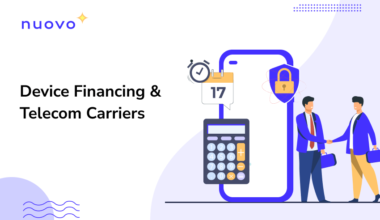In today’s rapidly evolving digital landscape, access to digital technology and financial services has become a vital necessity. However, in Southeast Asia, a region known for its rapidly growing economies and diverse cultures, a significant portion of the population still faces barriers to digital adoption and financial inclusion. Limited access to digital devices and financial services can result in exclusion from the opportunities presented by the global digital economy, hindering socioeconomic progress and leaving many individuals and small businesses behind.
To address these challenges, device financing has emerged as a powerful solution, offering a pathway to accelerate digital adoption and boost financial inclusion throughout Southeast Asia. Device financing refers to the practice of providing affordable loans or installment plans specifically designed for the purchase of digital devices, such as smartphones and tablets. By making these devices more accessible and affordable, device financing aims to bridge the digital divide and unlock the potential for individuals and communities to thrive in the digital age.
This article takes a deep dive into the crucial role of device financing in Southeast Asia, exploring how it can empower individuals, enable small businesses, and foster economic growth and discusses the implications of device financing and the risks involved.
The State of Digital Adoption and Financial Inclusion in Southeast Asia
Southeast Asia has one of the fastest-growing economies in the world, with a population of more than 655 million people. However, the region still faces challenges in digital adoption and financial inclusion. According to a report by Google, Temasek, and Bain & Company, the internet economy in Southeast Asia is expected to reach $300 billion by 2025.
In Southeast Asia, access to digital technology and financial services remains a challenge for many. According to a report by the World Bank, 61% of South Asians live within range of a telecom network, but still do not use the internet.
The lack of digital literacy and infrastructure in the region is a significant barrier to digital adoption. According to a survey by the Asia Foundation, only 26% of respondents in Cambodia, Indonesia, and the Philippines had used the internet to access government services. Moreover, only 19% of respondents in the same survey used the internet to access financial services.
Limited device ownership is another challenge to digital access in Southeast Asia. According to a report by GSMA, only 41% of the region’s population owns a smartphone. In Cambodia, Laos, and Myanmar, less than 30% of the population owns a smartphone.
Limited access to digital technology and financial services can lead to exclusion from the global economy, hindering economic growth and social development.
Key challenges preventing the adoption of mobile devices
1. Lack of digital literacy
Lack of digital literacy among certain segments of the population is one of the major challenges that prevent the widespread adoption of mobile devices. Owning a smartphone alone is not enough to drive digital adoption. Efforts should be made to provide training and support to ensure that individuals can effectively utilize the devices and access digital services.
2. Infrastructure development
Another crucial aspect that needs attention, enhancing internet connectivity and expanding network coverage in rural areas will ensure that individuals across the region can access digital services seamlessly. Collaboration between governments, private sector entities, and civil society organizations is essential to address these infrastructure gaps.
3. Affordability of devices
Many individuals in the region have low incomes and may struggle to make monthly payments for device financing plans. To overcome this, governments, financial institutions, and tech companies need to develop innovative financing models that cater to the needs and financial capabilities of individuals in Southeast Asia.
Device Financing as a Solution
Device financing has emerged as a solution to accelerate digital adoption and boost financial inclusion in Southeast Asia. Device financing has emerged as a solution to accelerate digital adoption and boost financial inclusion in Southeast Asia. Device financing refers to the practice of providing loans or installment plans for the purchase of digital devices, such as smartphones and tablets.
Device financing can enable individuals and small businesses to purchase the digital devices they need to access the internet and financial services. By spreading the cost of the devices over time, device financing can make digital devices more affordable and accessible.
Device financing can also help to build credit histories and improve financial inclusion. By making timely payments on their device financing loans, individuals can establish a positive credit history, which can be used to access other financial services, such as loans and credit cards.
Key Players and Initiatives in Device Financing
Governments, financial institutions, and tech companies have all played a role in promoting device financing in Southeast Asia. Governments in the region have launched programs and policies to support device financing.
For example, the Indonesian government has launched the “Smartphone for Everyone” program, which provides low-interest loans for the purchase of smartphones. In the Philippines, the government has launched the “Free Wi-Fi for All” program, which aims to provide free internet access in public places.
Financial institutions in the region have also embraced device financing as a way to expand their customer base and promote financial inclusion. For example, CIMB Bank in Malaysia offers a smartphone installment plan to its customers, while Maybank in Singapore offers a mobile phone financing program.
Tech companies have also been involved in promoting device financing in Southeast Asia. For example, Google has partnered with Indonesian banks to provide low-interest loans for the purchase of smartphones. In Vietnam, Momo, a mobile wallet provider, offers installment plans for the purchase of smartphones.
In Cambodia, Wing, a leading mobile banking service provider, offers device financing options to its customers. Through their partnership with smartphone manufacturers and retailers, Wing enables individuals to purchase smartphones through installment plans, making it more accessible for those who cannot afford to pay the full price upfront. This initiative has led to an increase in smartphone ownership and improved access to digital services for many Cambodians.
Device financing: Risks to consider
There are several opportunities for further growth and expansion of device financing in Southeast Asia. The region has a young and dynamic population, and as the economy continues to grow, more individuals will seek access to digital services. This presents a significant market for device financing providers to tap into. And yet, there is a noticeable reluctance from banking and financing organizations as well as telecom companies and OEMs when it comes to actively promoting device financing. Device financing can be an effective tool for increasing access to digital devices and promoting financial inclusion, it is important to consider and address certain risks associated with this approach.
Here are some key risks that are considered a roadblock:
- Default risk
There is a risk of borrowers defaulting on their device financing loans, which can have financial implications for both the lenders and borrowers. Lenders need to assess the creditworthiness of borrowers and implement robust risk management practices to mitigate the default risk.
- Repossession risk
In the event of loan default or non-payment, there is a risk of lenders needing to repossess the financed devices. Lenders should have clear policies and procedures in place for handling such situations while ensuring fair treatment of borrowers.
- Consumer protection
It is important to ensure that borrowers are well-informed about the terms and conditions of device financing, including interest rates, fees, and repayment schedules. Adequate consumer protection measures should be in place to safeguard borrowers’ rights and prevent predatory lending practices.
Enter NuovoPay Device Financing Risk Management platform
NuovoPay is a platform designed to help finance companies and telecom carriers manage the risks associated with device financing, such as smartphones and laptops. It incorporates modern technologies like default and delinquency management, automation, and third-party integrations for credit risk assessment, risk-based pricing, and fraud detection.
With NuovoPay, you can make informed decisions about qualifying candidates for device financing and set favorable terms for device retrieval. It also helps minimize the financial risks and losses that can occur due to payment defaults.
By utilizing NuovoPay, finance companies and telecom carriers can effectively handle the challenges of device financing, ensuring better risk management and improved outcomes.
Read More: Choosing the Right Device Financing Risk Management Platform for Your Business
Conclusion
Device financing holds immense potential for accelerating digital adoption and boosting financial inclusion in Southeast Asia. By providing affordable access to digital devices, individuals and small businesses can overcome the barriers of limited device ownership and gain access to the internet and financial services.
Governments, financial institutions, and tech companies play crucial roles in promoting device financing and ensuring its widespread adoption. By addressing challenges such as affordability, digital literacy, and infrastructure, Southeast Asia can pave the way for a digitally inclusive future, where individuals from all backgrounds can fully participate in the digital economy.
Through collaborative efforts and innovative solutions that eliminate the risks involved in device financing, driving economic growth, empowering individuals, and fostering financial inclusion throughout the region is possible. It is a step forward in bridging the digital divide and ensuring that no one is left behind in the digital era.





